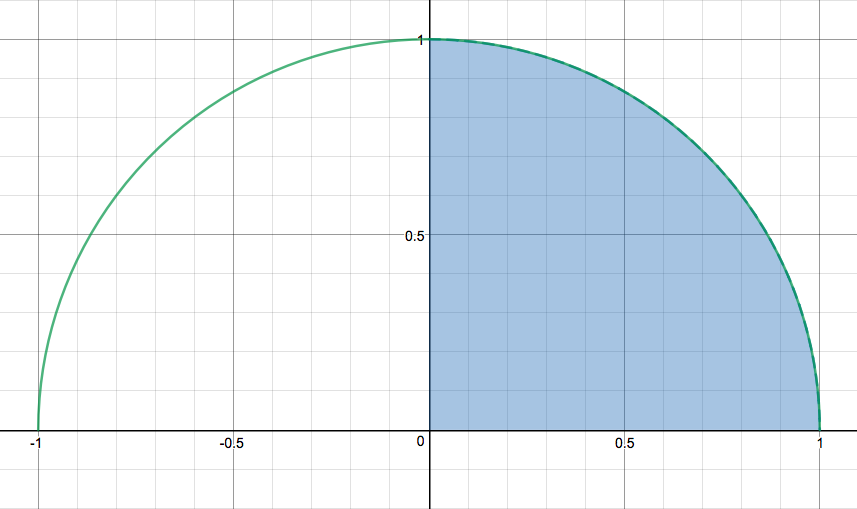Question #2e036
2 Answers
Shown by considering geometry...
Explanation:
I wanted to provide a simple way of evaluating this integral
The first thing we see is that the function is
This is just a circle of radius 1, and centre
This is just this shaded region...
When evaluating from

What is just a quarter of the area of a circle of radius 1
Full area of the circle =
Hence quarter area =
Conventoinal means of substitution...
Explanation:
The conventional way of solving this integral:
We can do a trigonometric substitution...
Let
and we know
Hence our integral becomes:
Changing the limits...
Use

